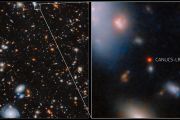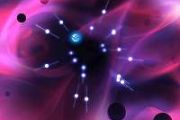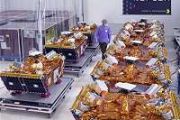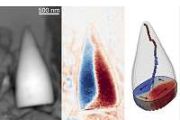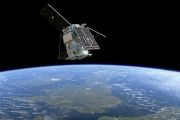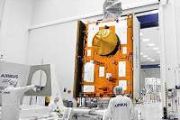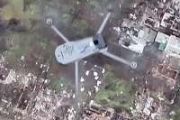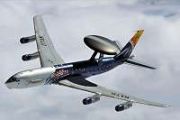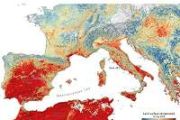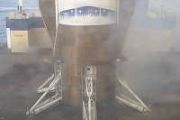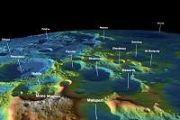
Copernical Team
ESA unveils its comprehensive, high-resolution image library in a revamped platform
 The European Space Agency (ESA) has recently re-introduced its specialized photo platform, 'ESA Photolibrary for Professionals', enhanced with a sleek new user interface, advanced search capabilities, and added download options. Users who sign up for an account on this platform can gain access to an extensive selection of professional, high-resolution images - the largest compilation available f
The European Space Agency (ESA) has recently re-introduced its specialized photo platform, 'ESA Photolibrary for Professionals', enhanced with a sleek new user interface, advanced search capabilities, and added download options. Users who sign up for an account on this platform can gain access to an extensive selection of professional, high-resolution images - the largest compilation available f Rivada Space Networks joins Astra Carta Initiative for Global Space Sustainability
 Rivada Space Networks has joined the #Astra Carta initiative to accelerate space sustainability. Launched by the Sustainable Markets organization, Astra Carta brings to reality a vision for space sustainability outlined by His Majesty King Charles III, when he was the Prince of Wales, at the UK Government's Summit for Space Sustainability in 2022.
Following the Global Leaders on Space Sust
Rivada Space Networks has joined the #Astra Carta initiative to accelerate space sustainability. Launched by the Sustainable Markets organization, Astra Carta brings to reality a vision for space sustainability outlined by His Majesty King Charles III, when he was the Prince of Wales, at the UK Government's Summit for Space Sustainability in 2022.
Following the Global Leaders on Space Sust A quantitative analysis of the in-orbit collision risks
 The amount of space debris has not stopped increasing since the first satellite was launched in 1957. The European Space Agency (ESA) estimates that there are more than 131,000,000 useless space waste objects, between 1 millimeter and 10 centimeters, currently orbiting around the Earth at an average speed of 36,000 kilometers per hour, which come from different sources such as last stages of roc
The amount of space debris has not stopped increasing since the first satellite was launched in 1957. The European Space Agency (ESA) estimates that there are more than 131,000,000 useless space waste objects, between 1 millimeter and 10 centimeters, currently orbiting around the Earth at an average speed of 36,000 kilometers per hour, which come from different sources such as last stages of roc Using lensed gravitational waves to measure cosmic expansion
 The universe is expanding; we've had evidence of that for about a century. But just how quickly celestial objects are receding from each other is still up for debate.
It's no small feat to measure the rate at which objects move away from each other across vast distances. Since the discovery of cosmic expansion, its rate has been measured and re-measured with increasing precision, with some
The universe is expanding; we've had evidence of that for about a century. But just how quickly celestial objects are receding from each other is still up for debate.
It's no small feat to measure the rate at which objects move away from each other across vast distances. Since the discovery of cosmic expansion, its rate has been measured and re-measured with increasing precision, with some Saturn's Rings shine in Webb's observations of Gas Giant
 On June 25, 2023, NASA's James Webb Space Telescope turned to famed ringed world Saturn for its first near-infrared observations of the planet. The initial imagery from Webb's NIRCam (Near-Infrared Camera) is already fascinating researchers.
Saturn itself appears extremely dark at this infrared wavelength observed by the telescope, as methane gas absorbs almost all of the sunlight falling
On June 25, 2023, NASA's James Webb Space Telescope turned to famed ringed world Saturn for its first near-infrared observations of the planet. The initial imagery from Webb's NIRCam (Near-Infrared Camera) is already fascinating researchers.
Saturn itself appears extremely dark at this infrared wavelength observed by the telescope, as methane gas absorbs almost all of the sunlight falling Ingenuity phones home
 The 52nd flight of NASA's Ingenuity Mars Helicopter is now in the official mission logbook as a success. The flight took place back on April 26, but mission controllers at NASA's Jet Propulsion Laboratory in Southern California lost contact with the helicopter as it descended toward the surface for landing.
The Ingenuity team expected the communications dropout because a hill stood between
The 52nd flight of NASA's Ingenuity Mars Helicopter is now in the official mission logbook as a success. The flight took place back on April 26, but mission controllers at NASA's Jet Propulsion Laboratory in Southern California lost contact with the helicopter as it descended toward the surface for landing.
The Ingenuity team expected the communications dropout because a hill stood between Europe's on a mission to explore the dark universe with the launch of the Euclid Telescope
 A 6-year mission to shed light on the 'dark universe' dominated by dark matter and dark energy started with the liftoff of the SpaceX Falcon 9 rocket carrying the Euclid Space Telescope for the European Space Agency (ESA) on July 1st at 11:12 a.m. EDT (1512 UTC) from Florida's Space Launch Complex 40 (SLC-40), Cape Canaveral Space Force Station (CCSFS). The telescope will take roughly four weeks
A 6-year mission to shed light on the 'dark universe' dominated by dark matter and dark energy started with the liftoff of the SpaceX Falcon 9 rocket carrying the Euclid Space Telescope for the European Space Agency (ESA) on July 1st at 11:12 a.m. EDT (1512 UTC) from Florida's Space Launch Complex 40 (SLC-40), Cape Canaveral Space Force Station (CCSFS). The telescope will take roughly four weeks Europe's space telescope launches to target universe's dark mysteries
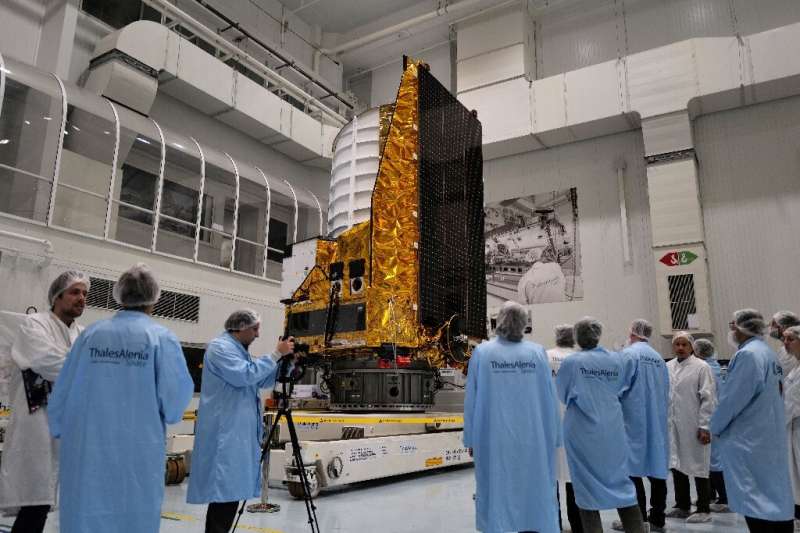
Europe's Euclid space telescope blasted off Saturday on the first-ever mission aiming to shed light on two of the universe's greatest mysteries: dark energy and dark matter.
The telescope successfully took off from Cape Canaveral, Florida, at 11:12 am local time (1512 GMT) on a Falcon 9 rocket from the US company SpaceX.
The European Space Agency was forced to turn to billionaire Elon Musk's firm to launch the mission after Russia pulled its Soyuz rockets in response to sanctions over the war in Ukraine.
After a month-long journey through space, Euclid will join its fellow space telescope James Webb at a stable hovering spot around 1.5 million kilometers (more than 930,000 miles) from Earth called the second Lagrange Point.
Launch broadcast replay
 Video:
01:45:00
Video:
01:45:00
Watch a replay of the launch broadcast for ESA’s Euclid.
ESA’s Euclid mission was launched into space on a SpaceX Falcon 9 from Cape Canaveral in Florida, USA, on 1 July 2023. It is now on its way to Sun-Earth Lagrange point L2.
By observing billions of galaxies out to 10 billion light-years, the space telescope will create the most detailed 3D-map of the Universe, with time as the third dimension.
The launch broadcast programme includes live segments from the launch site and ESA’s European Spacecraft Operations Centre (ESOC) in Darmstadt, Germany.
Watch the replay of the liftoff.
Access the related
Euclid liftoff
 Video:
00:05:59
Video:
00:05:59
ESA’s latest astrophysics mission, Euclid, lifted off on a Space X Falcon 9 from Cape Canaveral in Florida, USA, at 17:12 CEST on 1 July 2023.
Euclid has now started its month-long journey to Sun-Earth Lagrange point L2, located 1.5 million kilometres from Earth, in the opposite direction from the Sun.
The telescope will survey one third of the sky with unprecedented accuracy and sensitivity. By observing billions of galaxies out to 10 billion light-years, it will create the most extensive 3D-map of the Universe, with the third dimension representing time.
ESA's Euclid mission is designed to explore the composition and evolution




